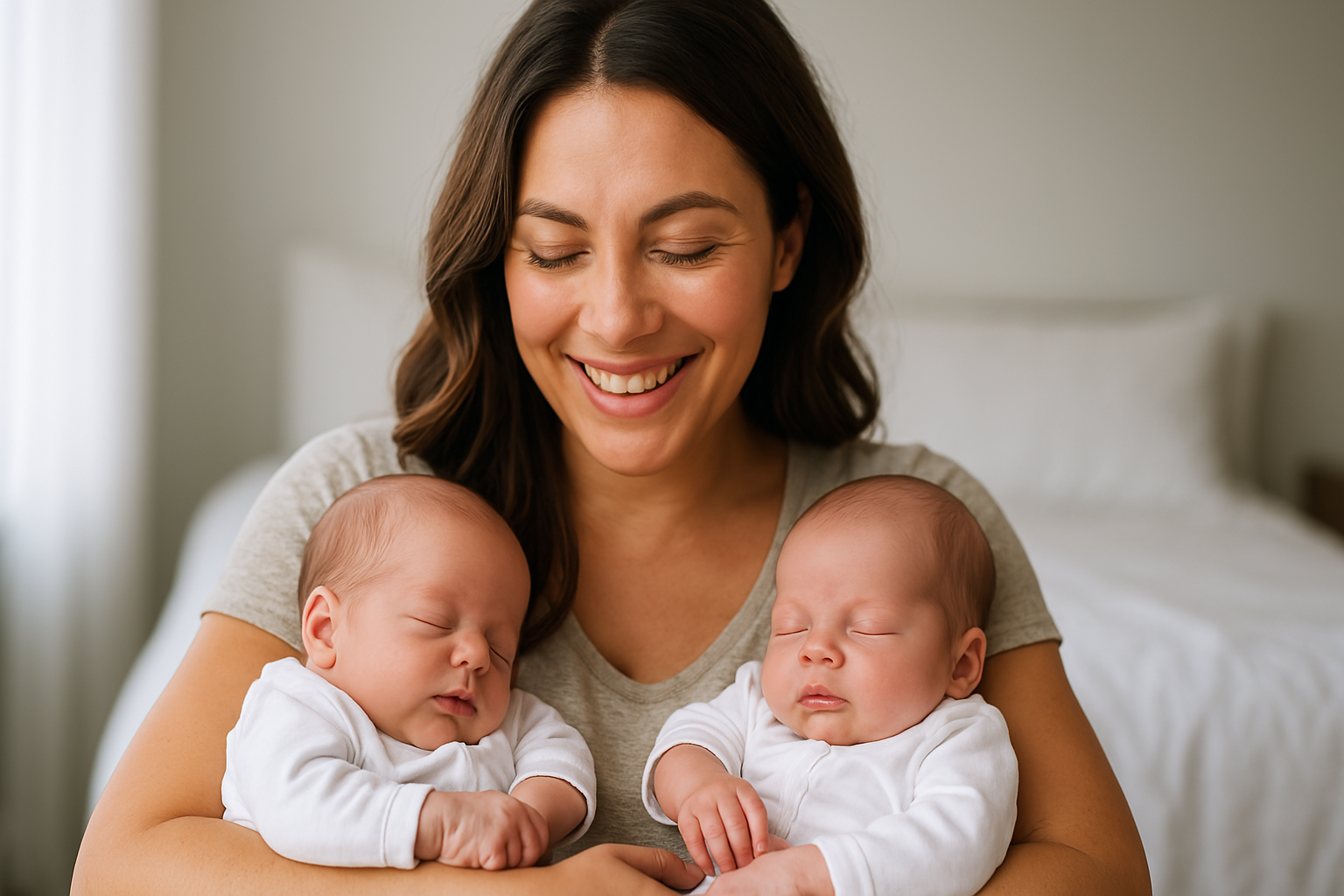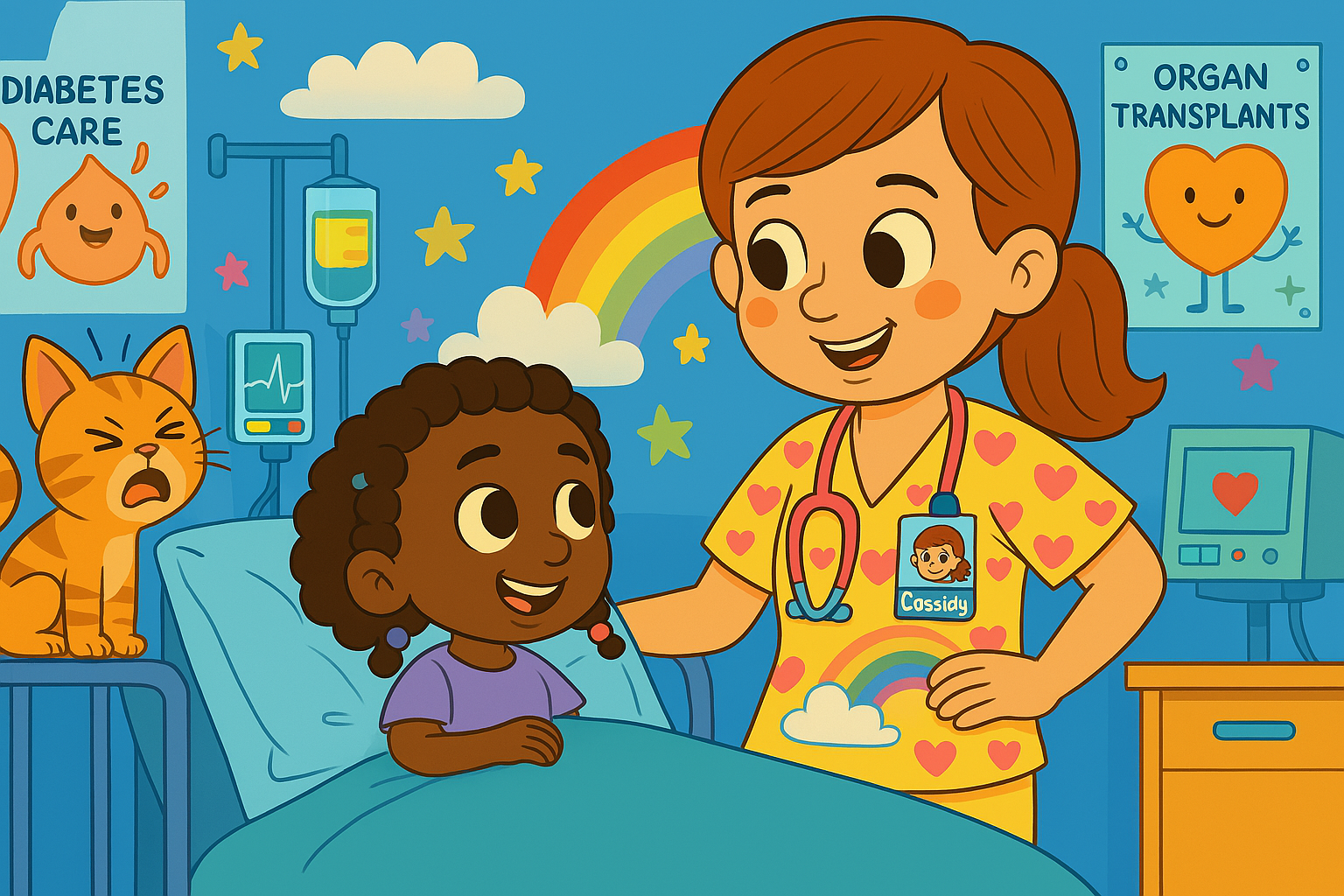#719 Bold Beginnings: 15/15 Rule
Bold Beginnings will answer the questions that most people have after a type 1 diabetes diagnosis.
You can always listen to the Juicebox Podcast here but the cool kids use: Apple Podcasts/iOS - Spotify - Amazon Music - Google Play/Android - iHeart Radio - Radio Public, Amazon Alexa or wherever they get audio.
+ Click for EPISODE TRANSCRIPT
DISCLAIMER: This text is the output of AI based transcribing from an audio recording. Although the transcription is largely accurate, in some cases it is incomplete or inaccurate due to inaudible passages or transcription errors and should not be treated as an authoritative record. Nothing that you read here constitutes advice medical or otherwise. Always consult with a healthcare professional before making changes to a healthcare plan.
Scott Benner 0:00
Hello friends, and welcome to another episode of bold beginnings. This is episode 719 of the Juicebox Podcast.
On this episode of bold beginnings, Jenny Smith and I will talk about the 1515 rule. If you've been diagnosed with diabetes, and given insulin, someone has said to you 15 carbs 15 minutes. Jenny and I are gonna break it down right now. While you're listening. Please remember that nothing you hear on the Juicebox Podcast should be considered advice, medical or otherwise, always consult a physician before making any changes to your health care plan. We're becoming bold with insulin. If you're enjoying Jenny, and you'd like to see what she's doing professionally, checkout integrated diabetes.com. That's where she works. If you're a US resident who has type one diabetes, or is the caregiver of someone with type one, please go to T one D exchange.org. Forward slash juice box. Join the registry complete the survey support people living with type one diabetes T one D exchange.org. Forward slash juice box. At the end of this episode, I'll list all of the bold beginnings episodes that have come before it, just in case you have missed one.
This episode of The Juicebox Podcast is sponsored by in pen from Medtronic diabetes. And because this is a short episode, I'm going to give you the entire ad right now. lickety split real quick, you ready. The pen is an insulin pen that connects to an app on your cell phone. When that happens, it gives you much of the functionality that you would get with an insulin pump. It's also completely possible that the in pen may only cost you $35. Head to in pen today.com To find out more. When you get there. If you're ready to try it just fill out the form where it says ready to try and hit submit. But if you want to learn more, do some reading, find out about the pen, insulin cartridge holder dosing window a knob and injection button and a cap just like you would expect from an insulin bed. But then it connects to the app on your phone through Bluetooth, giving you your current glucose levels, meal history, dosing history activity log reports, glucose history, the act of insulin remaining and your dosing calculator. Also I also while you're on the page in Penn today.com You can learn more about the offer that is made to people with commercial insurance terms and conditions apply of course, but you may pay as little as $35 for your in pen. You know what else in Penn offers 24 hour Technical Support hands on product training and online educational resources. All of that is something you can learn about in more depth at in Penn today.com in Penn requires a prescription and settings from your health care provider you must use proper settings and follow the instructions as directed where you could experience high or low glucose levels. For more safety information again, visit in Penn today.com There are links in the show notes of your podcast player and at juicebox podcast.com. To in pen Dexcom Contour Next One on the pod the T one D exchange G vo glucagon touched by type one, US Med and those are the sponsors for right now. But if you're interested in buying an add on the Juicebox Podcast, find me and we'll see what we can work out. Bold beginnings series is going well people are enjoying it today. Jenny, I put up our terminology episode as a two parter because it was like an hour and it was like an hour and 15 minutes long. So I just kind of cut it in half. I thought it would make it easier for people to be able to find terms within them. But this morning, I was hoping to do the 1515 rule. Ah, so let me find people's feedback on 1515.
Jennifer Smith, CDE 4:17
I am I'm first very curious what people have to say about
Scott Benner 4:21
that. It's it's it's repetitive and and is it Yeah, so you know, just a number of 15 carbs 15 minutes rule one just says no. 15 carbs for a low is probably overkill. Not everyone treats I've learned with 15 carbs, we still only use two or four carbs to do a kind of watch and weight thing. So then a longer piece of feedback is the whole premise of the 1515 rule just does not do well for most people. If we had followed that consistently our toddler would have been consistently over 400 and we would have been having rebound Hi is because of these uncovered carbs. For example, 30 grams can move my child all the way up to 300 blood sugar. Now, I guess we should go over very quickly. 1515 Roll means if you find yourself low, your doctor will probably tell you have 15 carbs, and wait 15 minutes, correct retest. Now, do you think that that's a pre CGM? Theory?
Jennifer Smith, CDE 5:34
It's a, yes, that's where I was going to entirely. It's old. It's old. Like, I think the term brittle diabetes is old and not a purposeful explanation at all. But the 1515 really came from lack of any technology outside of a glucometer, that you could actually do a finger stick to confirm symptoms and see where things were going within another 15 minutes, right, because it is going to take some time for a finger stick value to show a difference in that era of, you know, that kind of use of limited technology. But we have so much information now with the technology we have, that that rule is explained very well by these comments. Absolutely. It's, I know how much it takes to bring my blood sugar up this much when I'm hovering here, or if it's a really quick like jump over a cliff drop in blood sugar, I might need this much more. I think we also understand insulin a little bit better, at least, you know, a lot of the podcast listeners understand insulin a little bit better, and the action of it. And you can say, well, I'm in the clear of any insulin on board. This low is being driven by Basal insulin only. And maybe because I got a little bit more active or busy or whatever, in this timeframe, I probably could get away with three or four grams of carb, and even this out and be totally fine. Versus again, 15 grams that you don't need,
Scott Benner 7:11
it feels it feels like to me even meters not that long ago. I mean, I want to sound like an old person. But not that long ago, even meters weren't all that accurate. And some still, actually but you know, I think now what does the FDA push them towards? Is it is it. You know, the percentage, like if your blood sugar is actually 100, the meter has to report back at least like 85 or 115 are in that range somewhere.
Jennifer Smith, CDE 7:35
There's a percent it's actually the the average difference that's allowable for the FDA to approve the meters each of the meters. I mean, if you're really interested, and you really want the information, don't throw away the little pamphlet that comes with your test strips, because it has that direct information for you. How much off could it be?
Scott Benner 7:57
Well, and but in the past, I mean, I remember people advocating for meters to get better and better to where they are now. And I can remember in the past where people are like my meter can be off by 20 25%. It's on correct. So with all this unknowable data happening, what is your blood sugar really? Is it falling? Or is it you know, is it rising, you would have no idea without a CGM. So this very, it's a safety feature from back in the day where the doctor is like, if you're low, eat 15 carbs, wait 15 minutes and test again. And if you're still low, eat another 15 carbs, right would be the next thing. And yeah, and now hopefully, you know more and more people but so is so I guess here's the question, if you don't have any good tech is 15 carbs 15 minutes still the way to go.
Jennifer Smith, CDE 8:49
From a safety standpoint, yes. Okay. Um, from a standpoint of even newer insolence are more rapid acting insulins that do have a little bit more definitive timeframe of action, it's a shorter timeframe of action. Again, I think that there's more consideration that you can still do even if you're just taking multiple daily injections and using a you know, a meter to check your blood sugar's fingerstick wise, you can still start out on the low end of treatment. If you're willing to go about a little bit more testing to evaluate the need for more. It will it will tighten your ability or it will tighten your range after treating you're not necessarily going to always need 15 grams even if you're blind with you know with no CGM data, let's say I in fact, I would say that many people could probably do well with five to eight grams of carb and not get into trouble with excessively high blood sugars. Again, that's outside of exorbitant insulin on board wording that kind of thing. But outside of that, I still think 15 is an overshoot. But it's a safe enough overshoot that it's definitely going to raise your blood sugar.
Scott Benner 10:11
So I want to kind of bring a couple of different thoughts in here. So first of all, if you're listening to this, because you are more more newly diagnosed, it's important to know that carbs will hit you at different speeds. So, you know, taking 15 grams of a baked potato for a low blood sugar is not going to be a good idea, right? You need fast acting easy to absorb simple sugars, things like that. You also have to be aware that if you have if you have, let's say you have enough insulin working, where you're low falling, and you're going to need 30 carbs to stop it. But you take 10 of a simple sugar, it could look to you even on a CGM, like the insolence just, it's just running through the sugar, the sugar is not even slowing it down, it is slowing it a little bit, but it might not be enough. So the speed, it's we're understanding glycemic impact and load a little bit helps with with stopping low blood sugars, you can eat a baked potato is going to take forever for your body to absorb, which is why the emergency gel for instance, gets rubbed on the inside of your cheeks, right gets absorbed very quickly. I know this is like a scary time for people. You know, so you're you're newly diagnosed, you're falling, here's how this goes. You do the 15 carbs, 15 minutes, eventually, you're happy because while I stopped the low blood sugar, and then you start seeing the next step and thinking well by now but my blood sugar's to 20. Now afterwards, I don't want to I don't want to stop a 70 and make it a 220. And by the way, some people are treating low blood sugars, and they're calling them low when they're first diagnosed at 110. They're like, Oh, no, I'm getting low, you know, right. And so then they see the next piece of it. And you're trying to make sense now of how do I stop this low blood sugar without creating a high one, I would even say to you, I would jump past that idea and say how do I get into a world where I'm not stopping low blood sugars all the time? Yeah, correct. Yeah.
Jennifer Smith, CDE 12:08
Right. And that's what we focus on. Even in education, we first look for lows, or percent of time, lows, are they frequent? Are they at a consistent time of day? Is there a trend to them, for example, and if there is, we go to meet those first, most people who want tighter control, they're actually much more worried about the highs than they are about the lows. But if we can take away a good number of the lows that are occurring in a in a pattern, we can also take away a lot of the highs because it's it's hard to not over treat, especially I think in the beginning when you're really learning about things, and trying to judge how your body is, you know, I guess reacting to stuff. And also how your brain is able to overcome the low and the symptoms and being able to tell yourself, well, I don't need that 15 grams, I feel these low symptoms, they're horrible. I'm only going to treat with this much
Scott Benner 13:11
right. It's all it ends up being that understanding the bump and nudge ideas from the Pro Tip series will help you understand this. In simple simple terms. If if you're standing on the sideline of a football field, you're out of balance and somebody's inbounds and they're just wandering out of bounds, you might just put your hand up and stop them without pushing them. But if they're running out of bounds, you're going to have to shove them to keep them in correct. And so if your blood sugar is and this is where having a CGM becomes really valuable if your blood sugar is 65, but it's super stable at 65, a few carbs and there's no active insulin, a few carbs might move you up to 90 no trouble. But there's active insulin or if the 65 is falling, then you'll need more carbs to counterbalance that. But in general, the blanket statement 15 carbs 15 minutes is either going to lead you to a life of bouncing blood sugars and not understanding what's going on or it's going to lead you to the the idea of like, Hey, I think there's more here for me to understand. Right, just running through people's statements again, the 1515 plan can be too many carbs for those 15 carbs was way too much for me. overtreating lows was a big problem in my management. You don't need 15 carbs for low is something I wish someone would have told me. I mean, you might, but it's not a hard and fast rule. Right. And then this person says that the 1515 rule was drilled into us. And so early on to combat minor lows. They're just doing it over and over and over again. They're seeing what's happening. But they can't, in their mind make the leap. They shouldn't be doing it or they should be adjusting it somehow because of how fervently it was it was drilled and recommended.
Jennifer Smith, CDE 14:53
Yeah, absolutely. And again, I think it's the biggest takeaway, right? Now is if you're using any kind of technology, I guess CGM specific or if you're just really, really on top of doing finger stick after finger stick, because that's what you're choosing to do, then you've got enough information, and enough accurate information to be able to say, in the past couple of weeks, I've done the 1515 rule. It's created this roller coaster up and down that I no longer want. What if I just treat with 10? Instead of 15? Right? What if I treat with eight instead of 50? Right? I mean, there, there's some navigation that eventually you're going to learn how to do your own self experimentation that say, Well, you know, this is what I'm gonna have to do, because that's clearly not working with 15,
Scott Benner 15:49
right? And you're gonna hear people say to you constantly, like diabetes is a science experiment, you're gonna figure it out, etc. That's all they mean. They mean trial and error. Don't do the same things over and over and over again. You know, once you see something and it proves itself out, trust it and do something different. Correct. Okay. So there you go. The 1515 rule, which is not really a rule it's just get says the people so many times people like it's a thing.
A huge thanks to Ian Penn from Medtronic diabetes, for sponsoring this episode of The Juicebox Podcast in pen today.com. To get started, where to learn more. Thanks also to Jenny Smith, who works at integrated diabetes.com. If you're interested in procuring her services, that's where you would do it. I also want to thank you for listening, for sharing the show, and for being terrific. The other day, I received a photograph from the ninth listener who's bought a vanity plate for their car for the Juicebox Podcast. That is, um, that's some cool listeners. It's some great dedication from you. Thank you so much. If you head over to the private Facebook page, which I'll do right now with you Juicebox Podcast type one diabetes. Get yourself in there scroll to the top click on Featured Isabel has all the lists set up for you Pro Tip series variables, etc. One of those lists is the bowl beginning series. I will read from it. Episode 698 defines the bowl beginning series lets you know what we're planning on doing with it. Episode 702 is about honeymooning 706 adult diagnosis. 711 terminology Part One 712 terminology part two, Episode 715 is fear of insulin and today's episode, Episode 719 is the 1515 rule. There's much more to come. But that's where we're at right now seven episodes deep in the bold beginnings series. There's also a list there for defining diabetes that's 44 episodes of terms defined for you that you use every day with type one and type two diabetes very often. How about a nine episode series talking about celiac, and type one, or a 10 episode series about disordered eating 19 episodes dedicated to just me talking with kids, lots of interviews with me and the children 26 episodes Excuse me 27 episodes after dark series everything from drinking to disordered eating psychedelics living with bipolar. People who have type one diabetes, and other extraordinary challenges often will be found in the afterdark series. There's a 411 list called juicebox asst that has 16 Very popular episodes in no particular order. How about a 14 episode series about algorithm based pumps from loop to Omni pod five control IQ and there's way more coming in that series very soon. You can learn how to Bolus for fat and protein. And there are so many ask Scott and Jenny episodes where Jenny and I just answer listener questions. There is a growing list about mental wellness and type one many of the episodes are with licensed Marriage and Family Therapist Erica Forsyth a type one herself. We have a small but but but strong list of type twos. I really would like more of you to reach out to be on the show. Always looking for type twos to be on the show. Please reach out if you're interested in coming on and building that series up for others. Defining thyroid is a 10 episode series that will help you understand thyroid disease. And our pregnancy list has just grown no pun intended to 12 episodes. There's a how we eat series where people come on to talk about their eating Tao carnivore plant based low carb Bernstein FODMAP keto flexitarian intermittent fasting vegan, that list is also on the move, looking for more people to come on and talk about how they eat. There's a quickstart guide episodes from episode four all the way up to episode 100. These are the episodes people say if you listen to you'll get a vibe for how I feel about type one, and it gets you into the podcast. And that's the Quickstart list. Don't miss the diabetes variable series 22 episodes, giving you look into things that impact your blood sugar that you would never think of like hydration, sleep, weight gain, and more. And of course the diabetes Pro Tip series 25 episodes with Jenny and I starting at episode 210 newly diagnosed or starting over taking you through all the steps that I believe will help you bring your agency to where you want it to be. I hope you check them out. Thank you so much for listening. I'll be back very soon with another episode of The Juicebox Podcast.
Test your knowledge of episode 719
1. Why is it important to understand diabetes symptoms?
2. What role do lifestyle changes play in managing type 1 diabetes?
3. What are the different types of insulin used for?
4. How does diet and nutrition impact blood sugar levels?
5. How can stress and emotional health affect diabetes management?
6. What are the benefits of regular physical activity for people with type 1 diabetes?
7. Why is building a support system important?
8. How can staying updated on new diabetes treatments and technologies help?
Please support the sponsors
The Juicebox Podcast is a free show, but if you'd like to support the podcast directly, you can make a gift here. Recent donations were used to pay for podcast hosting fees. Thank you to all who have sent 5, 10 and 20 dollars!
































